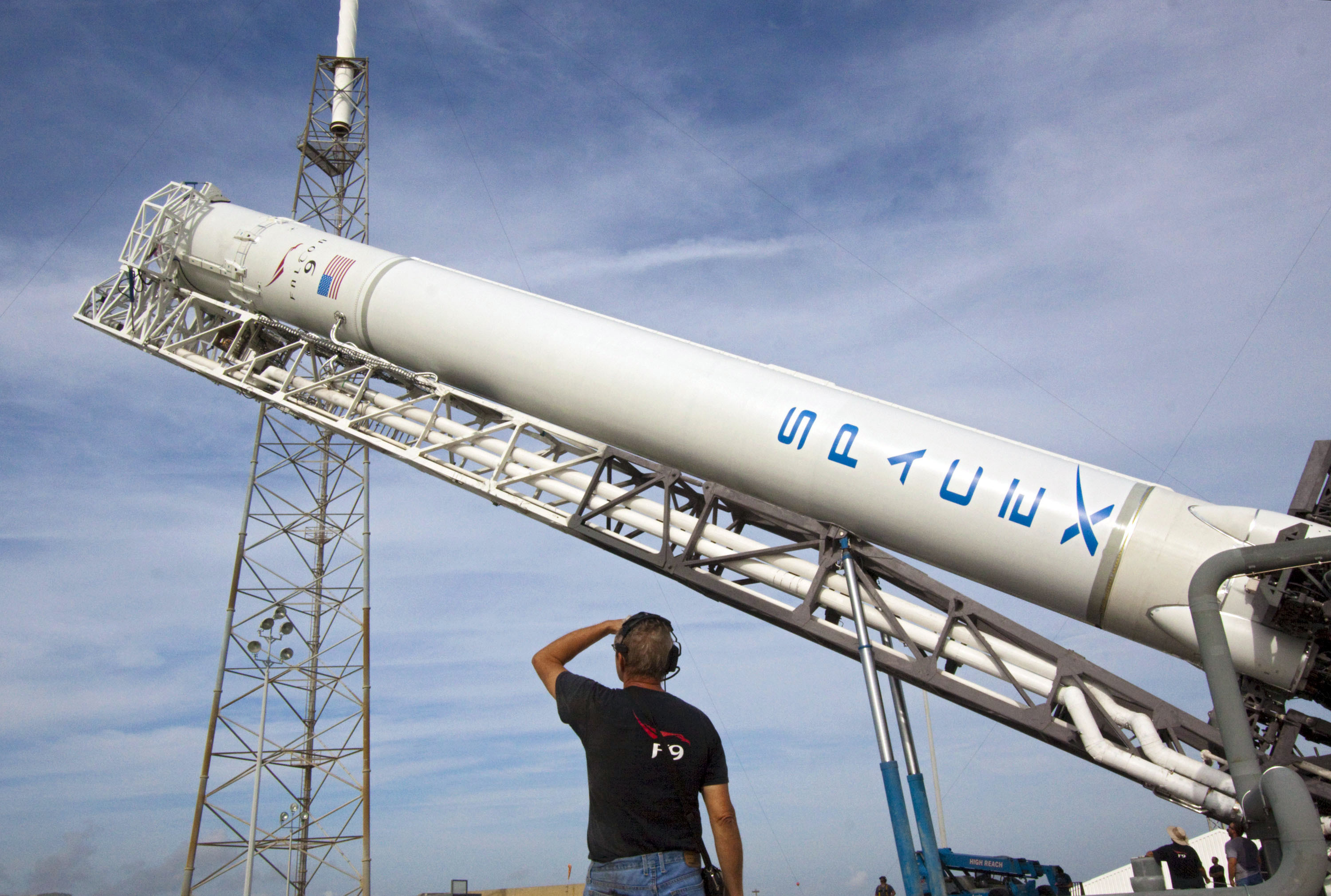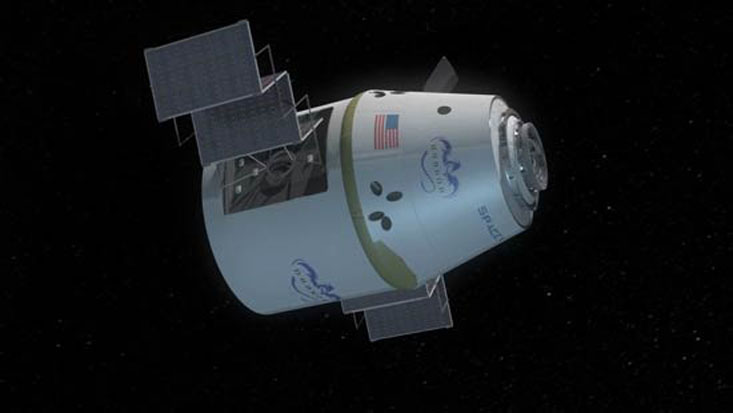Private SpaceX Rocket Test-Fires Engines for Space Station Trip

A private rocket poised to launch its first official cargo delivery run to the International Space Station performed a major engine test this weekend, setting the stage for its planned Oct. 7 liftoff.
The Falcon 9 rocket fired up its nine Merlin engines on Saturday (Sept. 29) for just two seconds during a full dress rehearsal at Florida's Cape Canaveral Air Force Station ahead of the upcoming flight by Space Exploration Technologies (SpaceX).
"During the static fire test today, SpaceX engineers ran through all countdown processes as though it were launch day," SpaceX officials wrote in an update Saturday. "Post static fire, SpaceX will conduct a thorough review of all data, and the Dragon spacecraft will be mated to Falcon 9 in preparation for next Sunday's targeted launch."
The Falcon 9 rocket is scheduled to launch an unmanned Dragon space capsule (also built by SpaceX) on Sunday at 8:35 p.m. EDT (0035 Oct. 8 GMT). If all goes well, the spacecraft should arrive at the International Space Station on Oct. 10, where it will be grappled by a robotic arm controlled by astronauts and attached to a docking port.
The mission follows a similar demonstration flight to the station in May by SpaceX's Dragon spacecraft. But Sunday's launch will kick off the company's first official cargo flight for NASA under a $1.6 billion deal that includes 12 such missions. [Photos: SpaceX's 1st Dragon Flight to Space Station]
The Hawthorne, Calif.-based SpaceX is one of two U.S. spaceflight companies with contracts to provide robotic cargo flights to the International Space Station for NASA. The other firm, Orbital Sciences Corp., of Virginia, has a $1.9 billion contract for eight missions using its new Antares rocket and Cygnus spacecraft. The first Antares rocket rolled out to its launch pad on the Virginia coast today (Oct. 1).
With the retirement of NASA's space shuttle fleet in 2011, the space agency is relying on new privately built spacecraft to ferry American astronauts and cargo to and from low-Earth orbit. The unmanned resupply flights are the first stage of that plan, which also includes purchasing seats for U.S. astronauts on private space taxis once they become available.
Get the Space.com Newsletter
Breaking space news, the latest updates on rocket launches, skywatching events and more!
SpaceX is one of several companies also seeking to launch astronauts into space for NASA. The company plans to use a crewed variant of its Dragon capsule for the job.
The upcoming Falcon 9 launch will be the fourth flight of the booster for SpaceX and the third flight of a Dragon spacecraft. The Dragon capsule made its first test flight in December 2010, which was followed by a successful round trip to the International Space Station earlier this year during SpaceX's demonstration flight in May.

For Sunday's launch, Dragon will be flying a mission for NASA's Commercial Resupply Services program. The flight is designated SpaceX CRS-1 and will deliver about 1,000 pounds (453 kilograms) of cargo, a shipment that includes supplies for 166 different experiments on the space station.
SpaceX's Dragon spacecraft are designed to make ocean landings and be recovered, allowing NASA to return a substantial amount of science experiments or equipment back to Earth — something only NASA's space shuttles could do before.
While the Dragon space capsules are the first robotic U.S. spacecraft to visit the International Space Station, unmanned cargo ships from other countries have made routine deliveries to the orbiting lab. Russia's robotic Progress spacecraft, Europe's Automated Transfer Vehicles and Japan's H-2 Transfer Vehicles round out the station's robotic resupply fleet.
SpaceX was founded in 2002 by entrepreneur Elon Musk to develop commercial rockets and spacecraft. Musk has said his goal is to develop a reusable launch system, one which could one day help humans explore Mars.
You can follow SPACE.com Managing Editor Tariq Malik on Twitter @tariqjmalik. Follow SPACE.com @Spacedotcom. We're also on Facebook & Google+.
Join our Space Forums to keep talking space on the latest missions, night sky and more! And if you have a news tip, correction or comment, let us know at: community@space.com.

Tariq is the Editor-in-Chief of Space.com and joined the team in 2001, first as an intern and staff writer, and later as an editor. He covers human spaceflight, exploration and space science, as well as skywatching and entertainment. He became Space.com's Managing Editor in 2009 and Editor-in-Chief in 2019. Before joining Space.com, Tariq was a staff reporter for The Los Angeles Times covering education and city beats in La Habra, Fullerton and Huntington Beach. In October 2022, Tariq received the Harry Kolcum Award for excellence in space reporting from the National Space Club Florida Committee. He is also an Eagle Scout (yes, he has the Space Exploration merit badge) and went to Space Camp four times as a kid and a fifth time as an adult. He has journalism degrees from the University of Southern California and New York University. You can find Tariq at Space.com and as the co-host to the This Week In Space podcast with space historian Rod Pyle on the TWiT network. To see his latest project, you can follow Tariq on Twitter @tariqjmalik.
Aisha Bowe becomes 1st Bahamian woman to reach space, remembers Alan Shepard’s landmark flight: 'He landed in Grand Bahama' (video)
Katy Perry just became the 1st pop star to sing in space — but Lance Bass, Beyonce, Lady Gaga, Sarah Brightman and Justin Bieber had their chance









